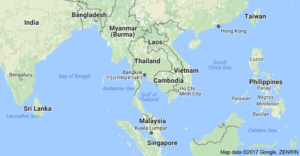ASEAN 2018-HEALTH: SINGAPORE – Asean planning to draw up occupational health guidelines
Asean member countries plan to create occupational health guidelines for industries by risk factor, to provide preventive measure recommendations for the health of workers in Laos and the region.
Occupational health and safety is one of the most important issues for workers in Asean countries, and regional guidelines would allow the assessment and monitoring of workers’ health, a meeting in Vientiane heard yesterday.
The guidelines would take into account existing laws, the main agencies involved, and law enforcement regarding occupational safety and the health of workers in Asean member countries.
Director General of Laos’ Hygiene and Health Promotion Department, Ministry of Health, DrBounphengPhilavong, yesterday highlighted the importance of the ‘Workshop on the Finalisation of Asean Guidelines on Occupational Health Surveillance Criteria by Industry’ as a platform for sharing ideas and experiences in the field.
“At present, Laos doesn’t have laws or guidelines regarding occupational health. But for several years we have followed Orders issued by the prime minister and the health minister concerning the prevention and control of occupational disease among the working population.
Regional guidelines would play an important role for all workers in Asean, including Lao people, because they would protect workers’ right to health,” he said.
A Malaysian health representative said the aim of the guidelines was to provide a reference when assessing and monitoring workers’ health.
The recommendation is that a basic assessment be conducted in order to determine workers’ health status and subsequently their health can be monitored at suggested intervals, he said.
This is important to ensure that possible health issues are detected early on and not allowed to advance to a serious level, he added.
He said the guidelines also provide recommendations on prevention and control measures that may be taken to prevent exposure to hazardous materials in certain industries.
The measures suggested are the basic steps and further action will be taken according to the needs and resources available.
The guidelines can be used as a first step, providing a platform to further enhance the prevention and control of occupational diseases among the working population.
According to the Journal of the Medical Association of Thailand, Malaysia has the Occupational Safety and Health Act (OSHA) 1994 through the Department of Occupational Safety and Health; the Philippines has its Occupational Safety and Health Standards through its advisory agency the Department of Labour and Employment; and Singapore has its Workplace Safety and Health Act 2006 which aims to advise on the prevention and control of occupational health hazards.
By PhetphoxaySengpaseuth
(Latest Update March 21, 2018)


NOTE : All photographs, news, editorials, opinions, information, data, others have been taken from the Internet ..aseanews.net |









